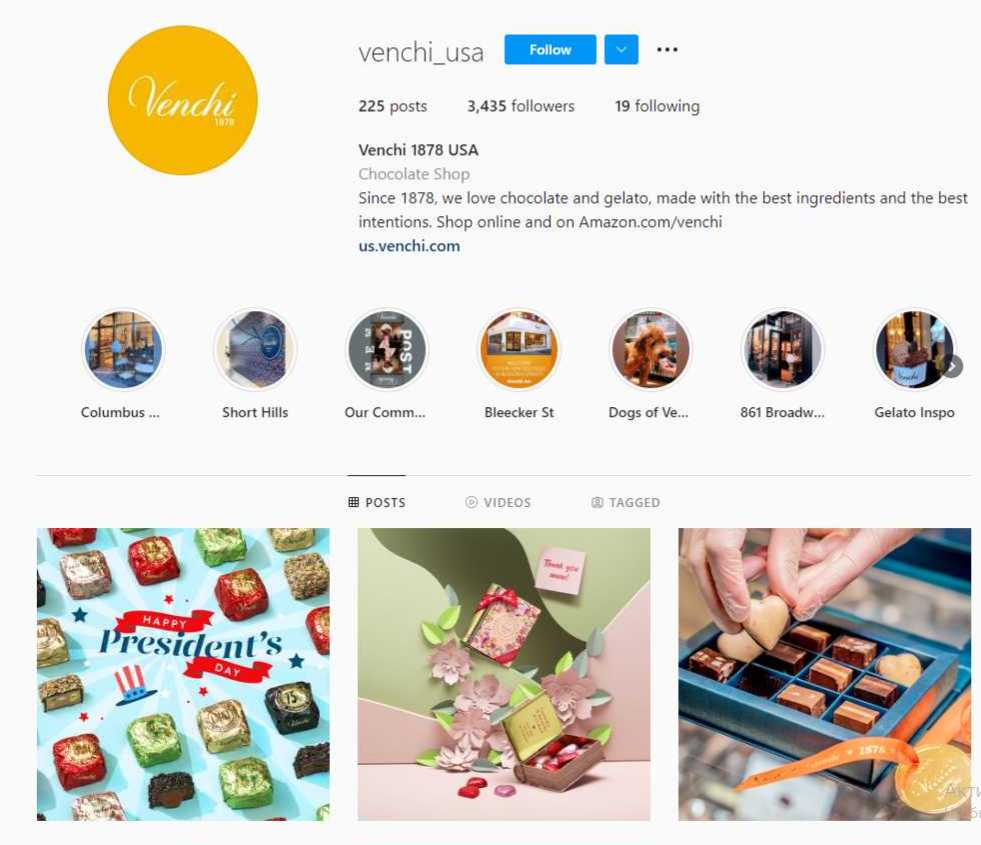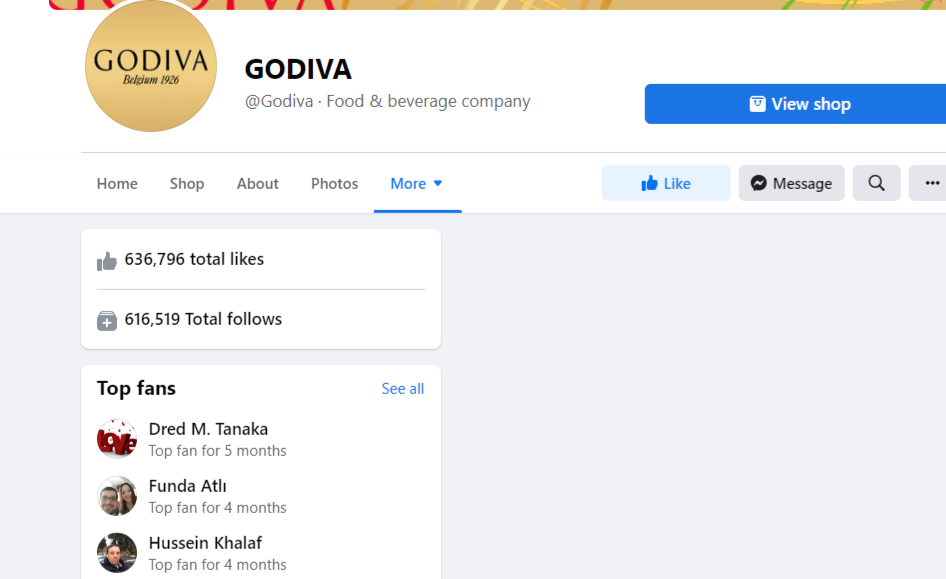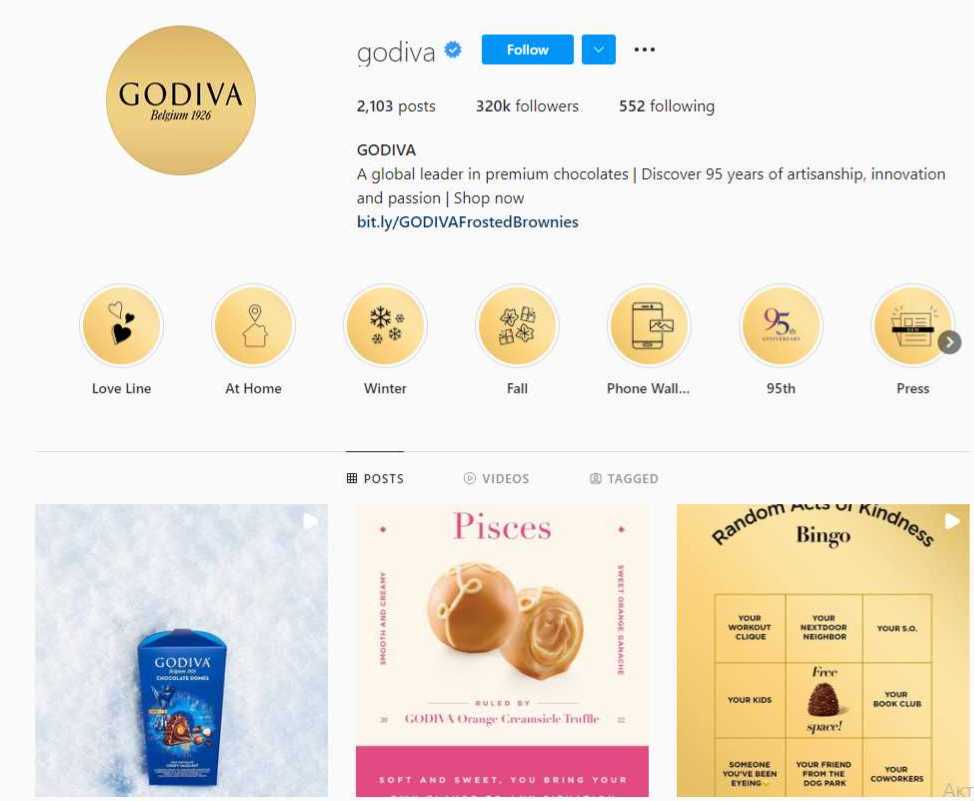Introduction
Social media has become an essential tool for the marketing of many businesses. With the increased number of social media users, many organizations have launched social media campaigns to enhance their online presence and attract consumers to their brands. It has also been a source of competition, as businesses seek to outperform each other’s advertisements through social media. Currently, every business needs to establish at least one social media handle in the different social media pages to market their goods (Naudé and Ivy, 2017). Tre Amis is a company operating in the industry of chocolate manufacturing and sale. The organisation has initiated a campaign for advancing its social media presence to promote its brand, attract consumers, and increase sales (Dwivedi, Kapoor and Chen, 2015). Table 1, Appendix 1, and Appendix 2 demonstrate the number of followers and the social media activity of the company. For the social media strategy to be successful, it should be based on the results of a situation analysis and social media listening for adequate goal setting.
Table 1. Number of Tre Amis’ followers on different social media sites
Self-Audit
It is crucial to conduct a social media audit for the company to check aspects one can improve. According to the report, the company had social media pages on Facebook, Twitter, and Instagram. Moreover, Tre Amis created videos in TikTok that advertised the company’s products (Brooksbank et al., 2019). However, the brand and product image are displayed in the lower parts of the page. In creating a social media page, all the essential images and information should be presented in the first part of the page (Febriansyah, 2019). It should be the first thing the reader sees when they open the page. Furthermore, such data should be brief and concise, yet informative and visually appealing (Nash, 2019). The location of the brand name and the product’s image on the social media page should be a priority.
Competitors’ Social Media Presence
Moreover, it is vital to consider the competitors’ social media presence and analyse how they have presented their page and consider performing to the best standards (He, Zha and Li, 2017). Social media has become an important place for many people and keeping them updated on the state of the brand can be very healthy for a business (Evans, James and Tomes, 2017). For example, one of Tre Amis’ competitors in the chocolate production sector is Godiva. The company’s presence on social media is displayed in Appendix 3 with the indication of the frequency of postings, content type, number of followers, and estimated engagement level. On average, the company updates information and releases new posts once in three days; such a frequency yields a medium-to-high level of engagement and might be followed by Tre Amis to reach its goals.
Another significant competitor for Tre Amis is Venchi, a company whose website redirects the users to such social media platforms as Instagram, Facebook, and YouTube. Similar to Godiva, Venchi’s engagement on Facebook and Instagram is higher than on any other platform which implies that people are more likely to respond to the brands through these media (See Appendix 4, 5, and 6). In comments on Facebook and Instagram, the followers of Venchi and Godiva communicate with the brands, developing brand awareness, recognition, and loyalty. The frequency of postings and the number of followers are also higher on Facebook and Instagram, which validates prioritizing these platforms to ensure competitive advantage for Tre Amis. Importantly, Venchi’s Facebook account contains a direct active link to the shop, which simplifies consumers’ access to purchasing, which is also used as a tactic by Tre Amis. The pages of the competitors contain links to the websites and other social media to increase consumer base.
Consumer Social Habit
Consumers’ social habits are essential for creating a social media page. The company should determine how frequently its target market visits social media to decide how often the information should be updated. In addition, it is essential to identify the target market, which includes young people for chocolate goods (Kinnell, 2019). This tendency does not mean that older people do not use chocolate. However, youth is the demographic that uses social media more often than older people. Indeed, research on college students in the UK showed that 95% of them cannot spend a day without social media accounts (Papasolomou and Melanthiou, 2020). This information makes it even more critical for the company to create an excellent social media account that appeals to it.
Social Trends
Some of the industries’ social trends that would seem necessary for their social media page include TikTok and Instagram (Eid, Abdelmoety and Agag, 2019). Customers would prefer to buy goods using social media and paid advertisement. TikTok is likely to overtake Instagram; it is essential to invest more into the platforms where most of the people are more likely to spend their time. Moreover, the company should launch sites for social media buying (Gattiker, 2017). Online buying sites are different companies that sell other companies’ suitable and a profit from them. It would be more profitable if it sought its consumers directly through social media. It would also benefit the customer by receiving it at a lower price (He, Zhang and Li, 2017). The company can also consider paying some of its consumers to help them in the advertisement for their product through social media (Terry, 2017). Knowing the current trends can be constructive in determining how to succeed at launching a social media campaign.
Social Media Goals and Recommendations
Brand awareness is the primary aim of advertisement through social media. According to research, most marketers increase brand awareness on social media pages to market their goods (Gesualdi, 2019). This goal might be achieved by increasing the number of social media accounts. It can also be done by increasing the number of people the company reaches through social media in a day. The company should strive to reach more people every day, setting targets and gradually adjusting them to the achievements (He, Zhang and Li, 2017). Moreover, the company should strive for increasing sales by attracting more subscribers, users, and followers to its pages on social media. The engagement and loyalty to the brand might be built through the postings of appealing and informative images and videos that communicate the company’s mission, values, as well as discounts or special offers (He, Zha and Li, 2017). Setting and achieving social media goals would play an essential part in increasing the company’s social media presence and overall brand reputation.
Conclusion
In conclusion, situation analysis, social media listening, and goal setting are vital in creating an excellent social media page. Auditing social media pages and checking the competitor’s social media presence and other trends are essential factors to consider. The audit should tell the company’s situation in terms of social media marketing, and the company should set clear goals following their current state. Thus, for Tre Amis to implement the social media strategy successfully, the recommendations presented in the document should be followed.
Reference List
Brooksbank, et al. (2019) ‘Social media in chocolate marketing industry’. Small Business Economics, 20(3), pp. 259–272.
Dwivedi, Y. K., Kapoor, K. K. and Chen, H. (2015) ‘Social media marketing and advertising’, The Marketing Review, 15(3), pp. 289–309.
Eid, R., Abdelmoety, Z. and Agag, G. (2019) ‘Antecedents and consequences of social media marketing use: an empirical study of the UK exporting B2B SMEs’, Journal of Business & Industrial Marketing, 35(2), pp. 284–305.
Evans, A., James, T. and Tomes, A. (2017) ‘Marketing in UK sport associations’, The Service Industries Journal, 16(2), pp. 207–222.
Febriansyah, R. (2019) ‘Marketing mix 7Ps in UK’ KnE Social Sciences, 3(13), p. 619.
Gattiker, U. E. (2017) Social media audit: measure for impact. New York: Springer.
Gesualdi, M. (2019) ‘Revisiting the relationship between public relations and marketing: Encroachment and social media’ Public Relations Review, 45(2)., pp. 372-382.
He, W., Zhang, S. and Li, L. (2017) ‘Social media competitive analysis and text mining: a case study in the pizza industry’, International Journal of Information Management, 33(3), pp. 464–472.
Kinnell, M. (2019) ‘International marketing in UK higher education: some issues in relation to marketing educational programmes to overseas students’, European Journal of Marketing, 23(5), pp. 7–21.
Nash, J. (2019) ‘Exploring how social media platforms influence fashion consumer decisions in the UK retail sector’, Journal of Fashion Marketing and Management: An International Journal, 23(1), pp. 82–103.
Naudé, P. and Ivy, J. (2017) ‘The marketing strategies of universities in the United Kingdom’, International Journal of Educational Management, 13(3), pp. 126–136.
Papasolomou, I. and Melanthiou, Y. (2020) ‘Social media: marketing public relations’ New Best Friend’, Journal of Promotion Management, 18(3), pp. 319–328.
Terry, G.A. (2017) ‘Resort timesharing’, Journal of Travel & Tourism Marketing, 3(1), pp. 99–114.
Appendix 1
Tre Amis’ Instagram page

Appendix 2
Tre Amis’ Facebook page

Appendix 3
Godiva social media presence and activity
Appendix 4
Venchi social media presence and activity
Appendix 5
Venchi Facebook page

Appendix 6
Venchi Instagram page

Appendix 7
Godiva Facebook page

Appendix 8
Godiva Instagram page

